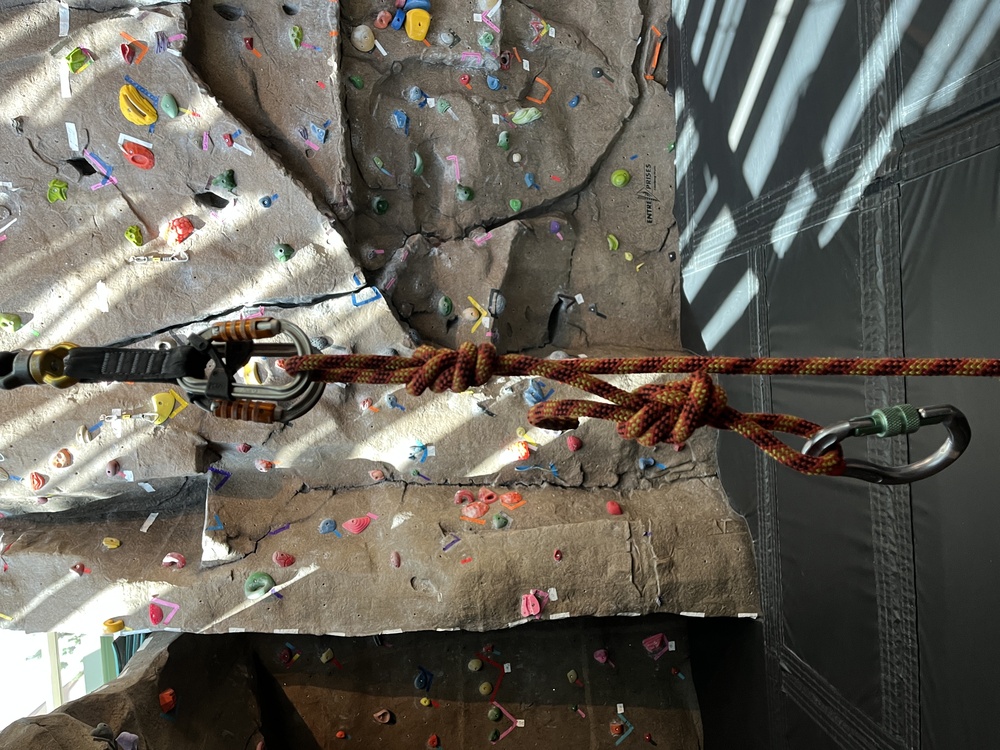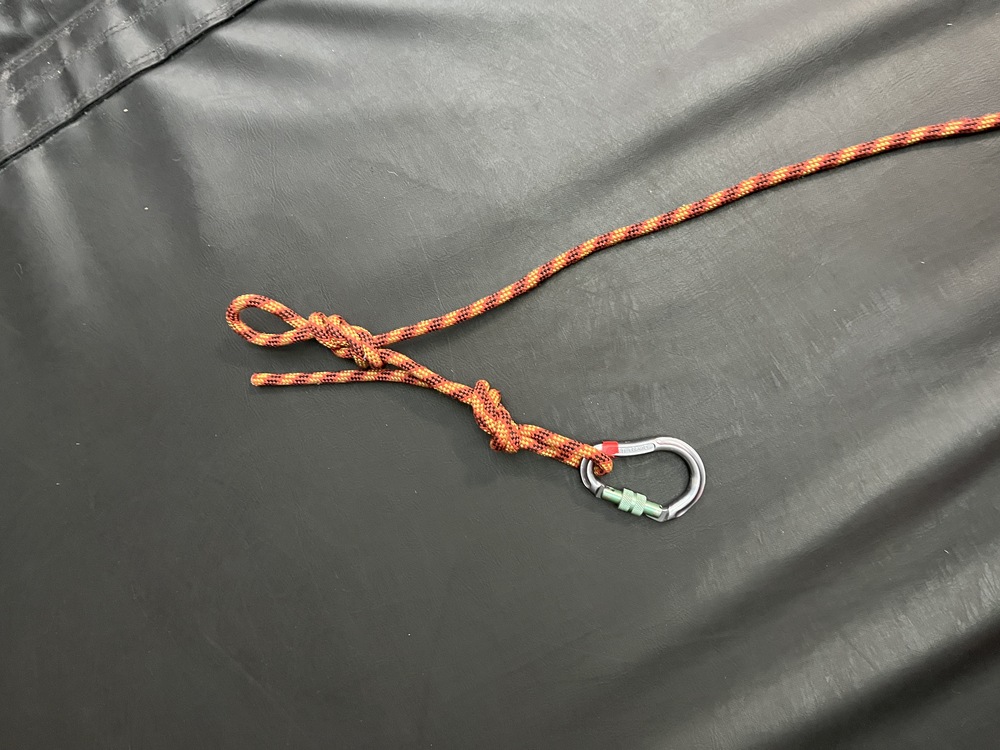Barcelona Autobelay Accident--Rescue Options?
|
|
I had just left the gym this morning when my buddy calls back to say he just witnessed an autobelay accident. Apparently, the person was about 3/4 the way up the wall (roughly 30-35 feet above the ground) when the autobelay came off of his harness (reasons TBD) and he was left clinging to the wall and unable to downclimb (smaller holds, slight overhang, perhaps inexperienced or too pumped?). He fell before anyone had time to get to him. Once I get more details on exactly what happened, I'll post up. In the meantime, it got me thinking... What were the rescue options in this situation? What kind of protocols do gyms have in place to deal with this kind of situation? What would you have done if you were the only one around to help? I have my own ideas, but wondering what the MP peanut gallery, and especially gym employees/owners might have to say. Most gyms around here don't let you carry anything on your harness while using the autobelays, so what might you have nearby to carry out an emergency, very time sensitive, pick off? Luckily, the guy landed mostly on the pad and suffered non-life threatening injuries (broken bones, dislocation, etc.), no apparent spinal/head injury, and will likely make a full recovery. I guess I should start it off with my two cents... Option 1 (extremely time sensitive): Climb up a route on autobelay next to the stranded climber, bear hug him/her and come down together. Option 2 (need a bit o' gear, still time sensitive): Do as in Option 1, but dangle a sling clipped to your belay loop with a locker (or girth hitched), with a second locker loose on the sling. Once beside the stranded climber, clip the second locker to his/her belay loop. Twist gate lockers might be best for quick one-handed operation. If you are allowed to have a PAS on your harness at the gym, then just use your PAS in the same way. Then, when/if the stranded climber comes off, there will just be some awkward intimate dangling as you both lower down on the good autobelay. What else am I missing? |
|
|
|
|
|
Have no specific thoughts on potential rescue scenarios beyond those you mentioned. Just reinforces my dislike of autobelays!!!! |
|
|
Option 1 will lead to you dropping said climber. You must clip to the stranded climber (option 2), although ideally clip, retrieve the auto belay if possible, then descend together. |
|
|
I saw this happen a few years ago. As a gym staff member climbed up to the now unclipped climber, other gym staff started stacking bouldering pads under the climber. They got him clipped to another rope and lowered him down, but a stack of pads probably would have prevented a serious injury. |
|
|
M1 H1, that's hilarious... and my buddy actually did try to use the big square tarp at the bottom to do exactly that, but the guy landed just beyond the improvised fireman's "life net". Others thought that laying out the couple of bean bag chairs that were around might have helped, but that could possibly have injured him further if he fell onto an uneven surface. JL, yeah dropping the climber is a definite possibility depending upon strength/weight differentials... I was just brainstorming what to do if you only had seconds to react and no gear handy. But good point. Alan, yes, I'm not exactly correct that all area gyms have that rule. At one older gym here in town you could probably carry a full rack and use body belays and no one would notice or care, whereas at another, much more professional and well-monitored gym (owned by a famous climber), I have seen gym employees ask climbers to remove stuff from their harness. I have a dedicated gym harness that has nothing on it--but if I could keep my Petzl Connect Adjust attached all the time, that would be an easy answer to Option 2. Thinking a bit more... due to legal issues in the USA, maybe the best thing would be just to call out to any available gym employee(s) and let them handle it. Over here, though, especially at that older gym I mentioned, I think I'll keep a sling and a locker handy just in case. Another thing of note... most such accidents are a failure to clip in, so the autobelay tape is still attached at the bottom of the route and could theoretically be fed out to the stranded climber using a spare rope, or brought up by another climber on the route next door. In this case, the autobelay biner and tape had retracted to the top of the wall. (My suspicion is the climber nosehooked the autobelay biner on his belay loop, or otherwise did not completely close the locker). |
|
|
My usual gym has eight autobelays and several options for dealing with this kind of event. Firstly, they have fixed draws near the top and at 2/3 height which could be clipped into if the climber didn't panic and was close enough to get to them. Neither given of course. Secondly, a massive gymnastics-type crash mat (I'd guess 6' x 10' x 24" open cell foam). I wouldn't want to voluntarily test it but it would be much better than landing on the rubber crumb flooring or a couple of regular bouldering mats. It's stored in clear sight, close enough to be dragged into place in a few seconds, by non-staff if necessary. Thirdly, there is a bag with rope and belay device hung next to the start one of the adjacent routes so a member of staff could climb up to the stranded climber without having to hunt for the relevant kit. |
|
|
The nose hooking is a seemingly common issue, though failing to clip in altogether is another common error. Personally I wouldn't trust a gripped climber to finagle a triple action biner one-handed. |
|
|
Heckle and throw chalk balls at them. |
|
|
As the climber in the scenario, an interesting choice to be made, is whether it is worth it to attempt to climb to the top. Many climbers are less adept at down climbing then climbing upwards. Most gym walls are open behind the wall forming a massive jug you can hang your whole arm over, probably long enough to wait for rescue. The autobelay might be in reach to clip back in. Of course the the huge downside is you would be increasing the damage from a fall the higher you got. So if you are 95% of the way to the top, it might be worth it, and at 50% it probably isn't. So at 75% as was the case for this climber, I don't know. |
|
|
Depending on whether the layout includes neighboring top ropes, you might be able to swing a rope over to them from the ground. Perhaps even with a carabiner clipped to it. A gym trying to mitigate this might consider setting a straightforward route with those big ladder-rung holds right next to the autobelay routes. |
|
|
Depends on the gym and climber skills/weight. If there are fixed quickdraws on the wall the climber can clip direct on one of them until someone can get up with a rope to rescue them. If there is a rope close enough the climber can hand over hand lower themselves. The best option is the climber knowing how to downclimb, some gyms I go to have an autobelay with a 5.11 on it and a 5.6 or something easy on it that is easily down climbable. |
|
|
Usually in a gym there are many nearby holds, in addition to the climbed "route". Seems like simply keeping one's cool and carefully down-climbing, as far as possible, should be on the list of options. |
|
|
J L wrote: They may be common issues and common errors but if they occurred commonly, no gym would install autobelays. A climber using an auto belay has ONE thing to do properly. ONE VERY SIMPLE thing. I’m sorry to hear of anyone suffering injuries. |
|
|
Those movable pads that most gyms got rid of would be ideal |
|
|
Here are photos that many of you might find useful. The standard auto-belay rescue from the AMGA Climbing Wall Instructor Manuel and what the Climbing Wall Association recommends is listed below. I will try to format it in a easy to follow step-by-step manner but I can help to clarify anything that people have questions on. A quick note on my qualifications to comfortably share this: I work in college recreation, have been climbing for 10+ years, and an AMGA SPI, employ 4 AMGA Climbing Wall Instructors, and was a CWA Climbing Wall Instructor for several years. I am not a CWI provider however I work closely with the provider I use for trainings and sit in to keep my own skills sharp and learn new things. Auto-belay Rescue Method
A. B.When using this system it is best to avoid the use of a twist-lock or tri-lock carabiner. Scared or pumped climbers will struggle to open them and increase their risk of falling. Because they are lowering to the ground and not continuing to climb, it is okay to use a screw-gate carabiner even if it is not locked. In my facility we also keep the rescue kit accessible by the auto-belays so it is easy to identify and use if needed. We also use a different color of rope from our top ropes to make identification even easier. This method also works with top ropes that share a route but does require a staff member to actively belay a climber to the ground. Even if someone is not a CWI, I train and test my staff on how to utilize this system in the event that we do have a need for it. We have what I call the "Lifeguard Method" for our auto-belays where we train every climber on how to use them properly and use a visual confirmation, like a partner check, before anyone goes up the wall. Every gym is different but this is what I have found works best in my gym and for my staff and patrons. |
|
|
Nice, Thomas - that explains what's in the "rescue kit" by the autobelays at gyms near me. Of course that only works if there's a nearby autobelay or TR within reach of the stranded climber. |
|
|
Big Red wrote: You make a fair point about an auto-belay or TR being near the stranded climber. The only place I could think of another TR or auto-belay not being readily available might be on a speed wall. I know every space is different but i hope that there would not be spaces in a gym where a climber could become stranded in the event an auto-belay disconnected from their harness. I think this is actually a great thought experiment for risk management in a climbing gym setting to task managers with new and creative safety protocols. |
|
|
Which gym? |
|
|
Darwin-ning….? |

 Continue with onX Maps
Continue with onX Maps Sign in with Facebook
Sign in with Facebook
























